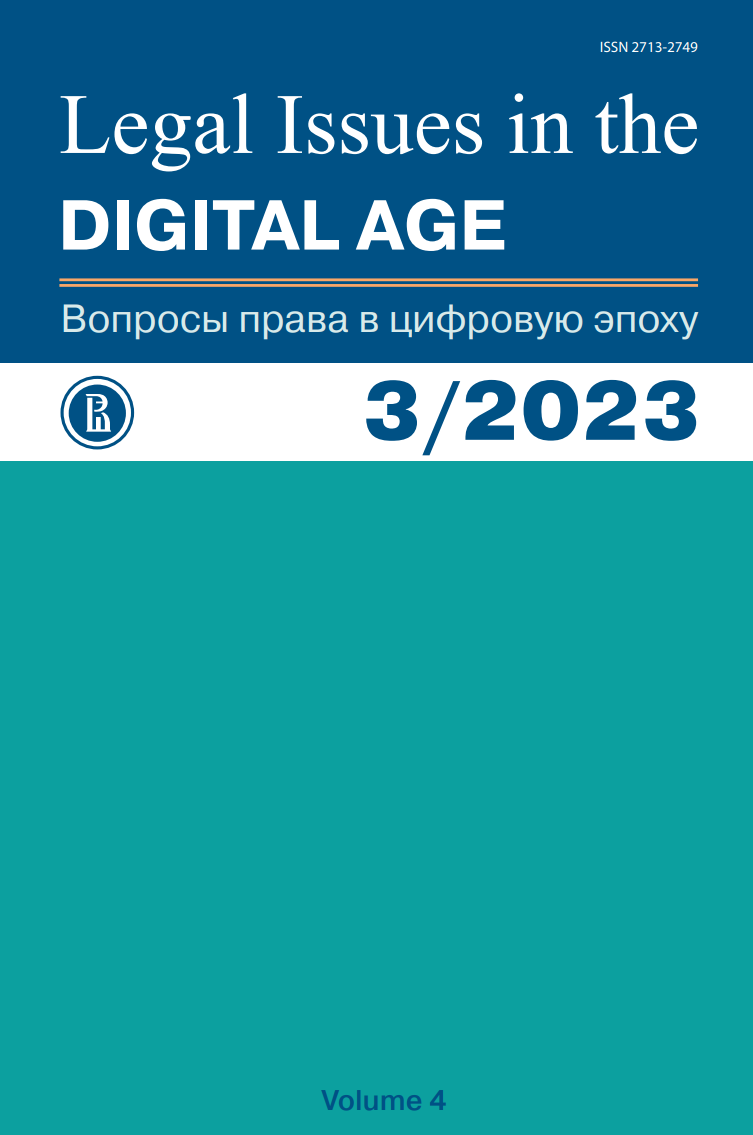Specialized Legal Language — Guided AI
Abstract
For legal regulation of behavior of artificial intelligence (AI), it is proposed, based onthe structural similarity between the law and computer software, to make the legalprofession a mandatory party to the design and development of artificial intelligencesystems, with a special object-oriented legal language to be developed. In discussingthe core elements of such a language, it is underlined that AI should be able toindependently formulate and describe its purposes in the same object-orientedlanguage to ensure feedback between AI and developers/users. It is demonstratedon the example of regulations and state standards adopted in Russia for driverlessvehicles, that developing an AI-specific legal language is a complex task, includingsince contextual gradation is needed to formalize legal judgments. The emergenceof a family of object-oriented legal languages is predicted. The issue of creating anAI theory designed to explain the data and facts to be handled by strong AI is raised.It is suggested to adjust the AI definition in the approved guidelines and strategiesto describe AI as a system searching for solutions outside a preset algorithm but notexcluding the use of algorithms altogether. The importance of algorithms for AI isdemonstrated, with strong AI interpreted as systems guided by an object-orientedlanguage. The differences between strong AI and man are analyzed. With regard toAI capable of responsible behavior, the internal representation of the outside worldand itself is discussed for consistency of input data. It is concluded that inevitableconceptual, linguistic and practical problems to be faced by lawyers involved in thedevelopment of strong AI should not hold back the “juridification of AI design”.
References
Asimov I. (2004) Laws of robotics. Мoscow: Eksmo, pp. 781–784 (in Russ.)
Bagana Zh., Khalipina Е.V. (2009) The role of language mixing in shaping global culture. Nauchnye vedomosti=Research Bulletin, no. 14, pp. 18–22 (in Russ.)
Baturin Yu.M., Polubinskaya S.V. (2022) Artificial intelligence: legal status or legal regime? Gosudarstvo i pravo=State and Law, no. 10, pp. 141–154 (in Russ.) DOI: https://doi.org/10.31857/S102694520022606-7
Descartes R. (1989) Treatise on method. Rules for the direction of the natural intelligence. In: Works in 2 vols. Мoscow: Mysl Publishers, vol. I, pp. 256–262 (in Russ.)
Gilson H. (1992) Reason and revelation in the Middle Ages. Theology in the medieval culture. Kiev: University, p. 18 (in Russ.)
Korolev V.Yu. et al. (2007) The mathematical foundations of the risk theory. Мoscow: Fizmatlit, p. 9 (in Russ.)
Кrinitsky N.А. (1984) Algorithms are around us. Мoscow: Nauka, pp. 76–80 (in Russ.)
Kudriavtsev V.N. (1970) Heuristic methods of crime qualification. In: Legal Cybernetics. Мoscow: Nauka, p. 69 (in Russ.)
Leibniz G. (1984) A history of the idea of universal characteristic. Мoscow: Mysl Publishers, p. 412 (in Russ.)
MacGarty J., Hayes P. (1972) Philosophical problems from the point of artificial intelligence. In: The cybernetic problems of bionics. Synthesis of models and engineering aspects. Мoscow: Mir, pp. 40–88 (in Russ.)
Pask G. (1972) The meaning of cybernetics in the behavioral sciences (the cybernetics of behavior and cognition; Extending the meaning of “goal”). In: The cybernetic problems of bionics. Synthesis of models and engineering aspects, pp. 9–39 (n Russ.)
Shay L., Hartzog W., Nelson J., Larkin D., Conti G. (2016) Confronting automated law enforcement. In: Robot Law. Cheltenham: Edward Elgar Publishing, pp. 235–273. DOI: https://doi.org/10.4337/9781783476732.00019
Shay L., Hartzog W., Nelson J., Conti G. (2016) Do robots dream of electric laws? An experiment in the law as algorithm. In: Robot Law, pp. 274–305. DOI: https://doi.org/10.4337/9781783476732.00020
Stepulyonok D.О. (2010) The model and implementation methods of object-based languages. Komp’yuternye instrumenty v obrazonanii=Computer Means in Education Process, no. 4, pp. 21–29 (in Russ.)
Turing А. (1960) Do machine think? Мoscow: Fizmatlit, 67 p. (in Russ.)
Wiener N. (1983) Cybernetics, or Control and Communication in the Animal and Machine. Мoscow: Nauka, 340 p. (in Russ.)
Authors who publish with this journal agree to the Licensing, Copyright, Open Access and Repository Policy.










